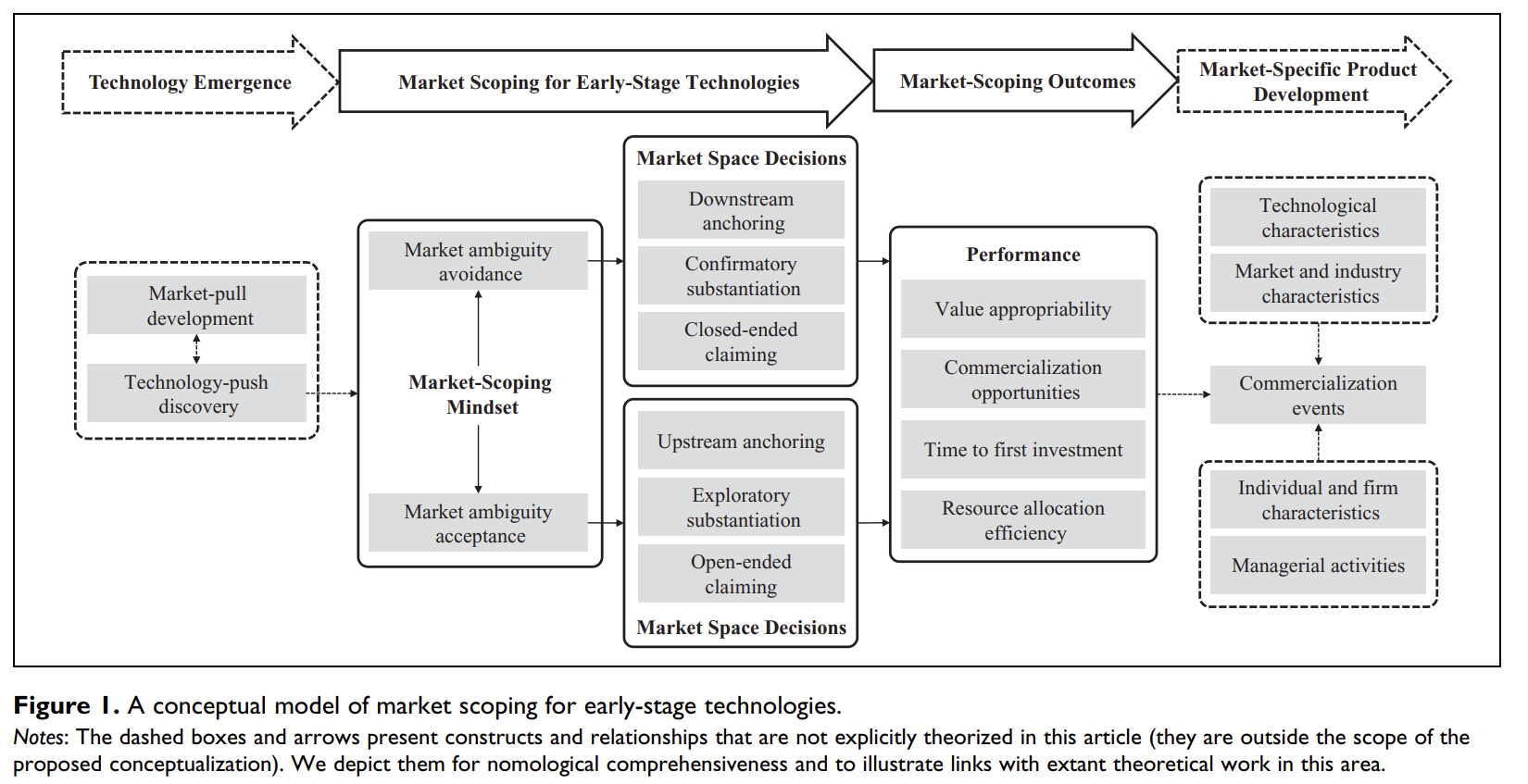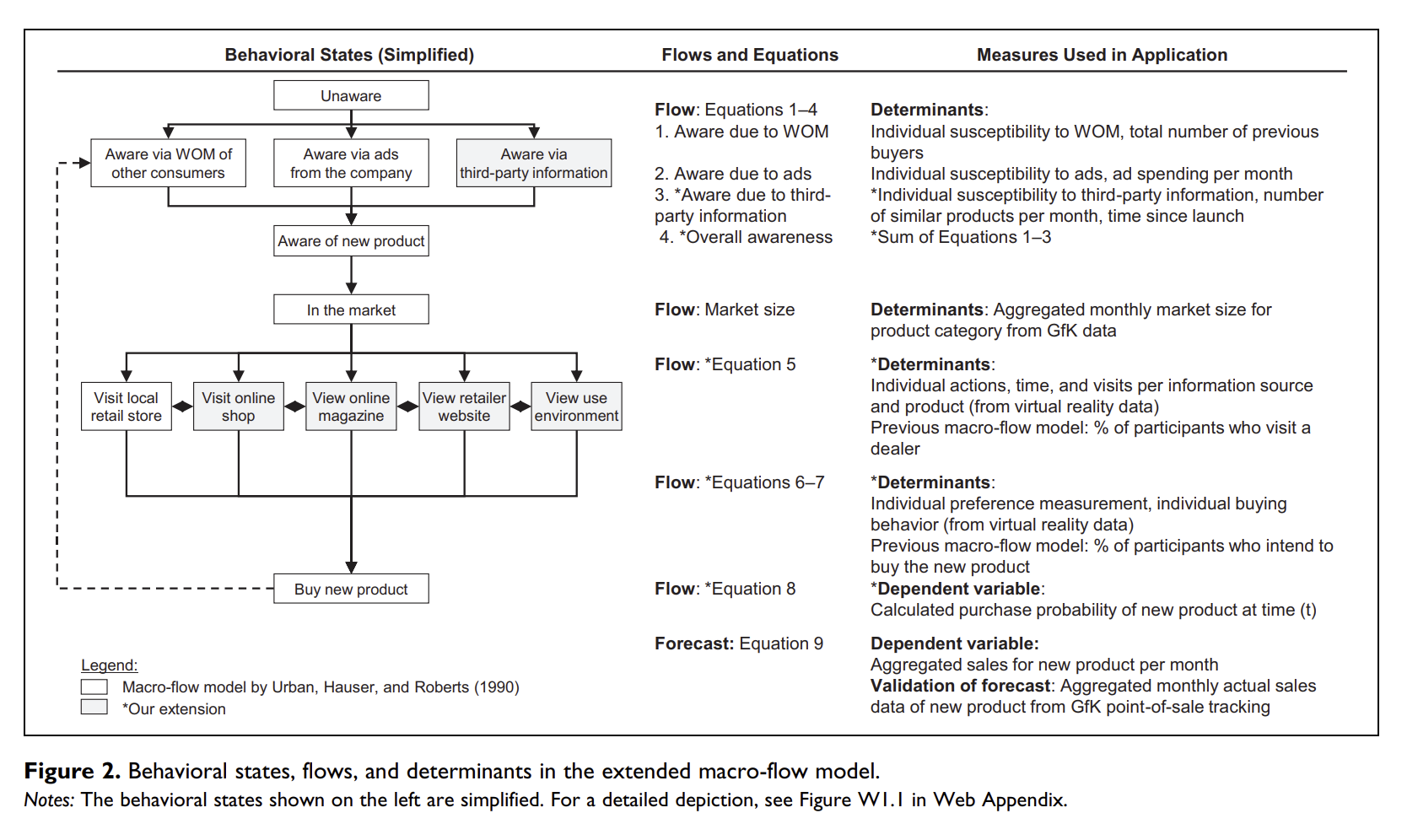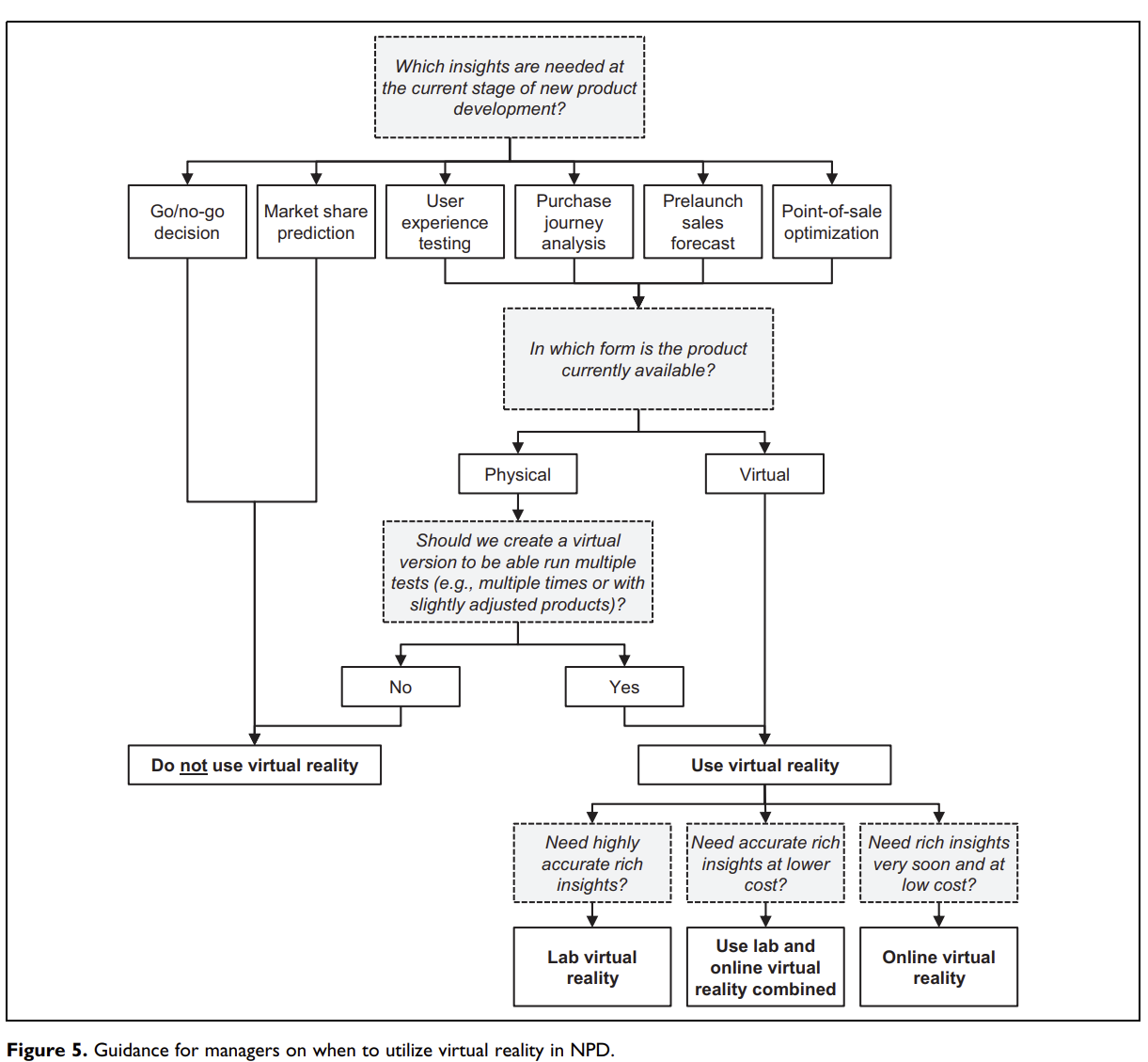4.2 New Product Development
(Moorman and Slotegraaf 1999) The Contingency Value of Complementary Capabilities in Product Development
Objective: Revisit and advance the interdisciplinary discourse on the direct relationship between organizational capabilities and firm performance by introducing a contingency-based approach centered on the role of external environmental information.
Conceptual Premise: The paper posits that the external environment’s informational content modulates how firms utilize their inherent technological and marketing capabilities, particularly concerning their product development efforts – both in magnitude and pace.
Methodology:
- Conducted a longitudinal quasi-experiment to insulate and discern the interplay between external information cues, organizational capabilities, and product development outcomes.
Key Findings:
Data analysis corroborates the proposed framework. Specifically, external environmental information acts as a catalyst, prompting firms to deploy their capabilities in ways that influence their product development trajectories.
The nuanced relationship uncovered underscores the flexibility of organizational capabilities, suggesting their primary value might not be in their sheer existence, but in their adaptive deployment in alignment with external cues.
(Sethi, Smith, and Park 2001) Cross-functional product development teams, creativity, and the innovativeness of new consumer products
Using survey from cross-functional teams in new product development.
Objective: The study examines the impact of cross-functional team characteristics and contextual influences on product innovativeness, given its crucial role in preventing new product failure.
Main Findings:
Primary Cause of Product Failure: A lack of innovativeness is the main reason for new product failure. Innovativeness is defined as providing uniquely meaningful benefits.
Factors Positively Affecting Innovativeness:
Strong superordinate identity within the team.
Encouragement to take risks.
Influence from customers.
Active project monitoring by senior management.
Social Cohesion: While beneficial up to a point, high levels of social cohesion among team members decrease innovativeness.
Interactions Between Factors:
The positive effect of superordinate identity on innovativeness is amplified when teams are encouraged to take risks.
This positive effect is reduced with increased social cohesion.
Functional Diversity: This doesn’t significantly influence innovativeness.
Implications: The authors highlight the importance of understanding these dynamics for both management practice and future research on product development teams.
(Rebecca J. Slotegraaf and Atuahene-Gima 2011) Value of Stability in New Product Development (NPD) Teams
Background:
The significant role of cross-functional teams in innovation.
Despite firms adopting cross-functional setups for NPD teams, they encounter challenges.
Research Gap:
- Understanding the role of stability in NPD teams, especially its effect on decision-making processes.
Objective:
- To decipher how stability within NPD teams impacts decision-making processes, and consequently, the success of new products.
Methodology:
A process-based model to investigate the influence of team stability.
Sample: Cross-functional NPD project teams from 208 high-tech firms.
Key Findings:
Stability and its Impact: The relationship between NPD team stability and team-level debate & decision-making comprehensiveness is curvilinear (i.e., having a turning point).
Decision-Making Dynamics: Team-level debate positively influences decision comprehensiveness.
Product Success: Decision comprehensiveness positively impacts new product advantage, but this is particularly pronounced at high levels of comprehensiveness.
(Grewal et al. 2013) Environments, Unobserved Heterogeneity, Effect of Market Orientation on Outcomes for High-TechFirms
Context:
Studying the interaction between market orientation and environment facets is a key focus in market orientation literature.
Previous empirical studies have shown mixed findings regarding this interaction.
Main Proposition:
The inconsistency in findings might be due to unaccounted unobserved heterogeneity that potentially hides the true relationships.
Unobserved heterogeneity might arise from higher order interactions involving factors like firm size and innovativeness.
Methodology:
Two studies presented focusing on firm performance or new product performance as the outcome.
Studies consider:
Market orientation, technological turbulence, market dynamism, and their interactions as explanatory variables.
Use finite mixture regression models to estimate relationships while factoring in unobserved heterogeneity in the form of latent regimes (segments).
Incorporate firm size and innovativeness as profiling variables in the model.
Core Findings:
Disaggregate models (multi-regime solutions) provide the best fit in both studies.
The effects vary across latent regimes, suggesting that potential aggregation bias might be present in previous empirical studies.
There’s a need for disaggregated analyses to study marketing phenomena accurately.
Theoretical Implications:
- The findings hint towards the possibility of forming theories that take into account unobserved heterogeneity and potentially higher order interaction effects.
(Wu et al. 2015) Stock Market Reactions to Horizontal Collaborations in New Product Development (NPD)
Background:
Rising trend of firms partnering with competitors for NPD.
Limited research on how the stock market perceives these collaborations.
Objective:
- Analyze stock market reactions to horizontal collaborations across various NPD phases: initiation, development, and commercialization.
Methodology:
- Analysis of a unique dataset containing 831 NPD announcements related to horizontal collaborations over a span of 12 years.
Key Findings:
Initiation Phase: Stock market typically reacts positively to horizontal collaborations in the NPD initiation phase.
Development and Commercialization Phases: The reaction is generally negative during the development and commercialization phases of NPD.
Asymmetrical Moderation: The innovativeness of the new product and the relative market and technological strengths of the collaborating competitor moderate these effects.
(Y. Kim and Slotegraaf 2016) Enhancing New Product Development Through Consumer Co-Creation and Brand-Embedded Interaction
Research Context:
Emphasizes the importance of accessing market knowledge promptly for effective new product development (NPD).
Previous research promotes consumer co-creation during the NPD process, typically viewing consumer input as static.
Study Proposition:
- Challenging the notion of consumer-generated content as fixed, the study explores how firms can elevate the quality of consumer suggestions by promoting relevant information exchange during co-creation.
Concept Introduction:
- Brand-Embedded Interaction: A process encouraging consumers to generate NPD ideas that satisfy both consumer needs and are in line with the brand’s aspirations and abilities.
Methodology:
- Two quasi-field experiments on Twitter.
Key Findings:
Dynamic interaction and personalized engagement during co-creation are instrumental.
Such interactions enable consumers to produce more “constructive” NPD ideas – ideas beneficial for both the consumer and the firm.
(R. Srinivasan, Wuyts, and Mallapragada 2018) Corporate board interlocks and new product introductions
Context:
Firms’ boards of directors influence various strategic outcomes.
However, the impact of boards on new products, a pivotal aspect of organizational adaptation, hasn’t been deeply studied.
Core Propositions:
The study focuses on “board interlock centrality”, which denotes how connected a firm’s board members are to boards of other companies.
The central argument is that this centrality provides firms with enhanced market intelligence, thus facilitating the introduction of incremental new products.
The motivation-opportunity-ability theory is used to suggest that two facets of board leadership can moderate this effect:
Internal vs. External Leadership: How the leadership of the board is oriented.
Marketing Leadership: The presence and influence of marketing expertise in leadership roles.
Methodology:
- The hypotheses are tested using data from publicly-listed US consumer packaged goods firms. This sector is chosen because it frequently sees incremental product innovations.
Core Findings:
Board interlock centrality indeed boosts new product introductions.
This effect is magnified when:
There’s strong internal leadership.
The board has internal marketing leadership.
The firm’s CEO has a marketing background.
Conversely, the effect diminishes when there’s a pronounced intra-industry external leadership presence.
These results underscore the importance of board interlocks on innovation outcomes, enriching the discourse on marketing leadership, board interlocks, and social networks.
(Molner, Prabhu, and Yadav 2018) Market Scoping
Managers’ market-scoping mindset (manifest as market ambiguity avoidance or acceptance) can shape market space decisions and outcomes
Avoidance leads to managers’ downstream orientation toward end users, leading to technology commercialization failure
Acceptance leads to managers’ upstream orientation, and helps uncover viable market spaces.

(Ho-Dac, Kumar, and Slotegraaf 2020) Marketing Continuous Improvement Products (CIPs): The Role of Development Information
Introduction:
Continuous Improvement Products (CIPs): Products designed for post-purchase improvements without the need for full replacement.
Challenge: Securing customer adoption of CIPs.
Research Design:
- Employed multimethod research across two different types of studies to examine factors influencing CIP adoption.
Key Findings:
Development Progress Information: Sharing updates or information about the progress of a product’s development increases the adoption of the current version of the CIP.
Perceived Commitment: The relationship between sharing development information and increased adoption is mediated by customers perceiving a stronger commitment from developers toward continuous improvement of the product.
Role of Product Familiarity: The influence of development information on adoption, through perceived developer commitment, is stronger for individuals familiar with the product. In other words, the more familiar customers are with a product, the more they value and trust the developer’s commitment based on the shared development progress.
(Harz, Hohenberg, and Homburg 2021) Virtual Reality in NPD: durable goods
Prelaunch sales forecasting approach
Virtual reality support behavioral consistency between participant’s info search, preferences, and buying behaviors
Research questions
Does virtual reality improve pre-launch sales forecasting?
Why do VR simulations (vs. traditional studio tests) lead to advantage in forecasting?
Data:
- GfK sales data
Virtual Reality:
Visualization capability: “the ability to simulate new products, customer touchpoints, and environments in a comprehensive, realistic, and engaging manner.” (p. 158)
Simulation scope
Similarity to reality
Immersion
Automated-tracking capability: Tracking of behavior
- Interactivity
Virtual reality types
Lab virtual reality
Online virtual reality
Extended Macro-Flow Model
models forecast the sales of new products over time before market launch (Urban, Hauser, and Roberts 1990)
Need 3 states
Behavioral states: attitudes and actions through which consumers flow in their purchase journal
the flows between these states
determines of these flows

Studies 1a and 1b: 2 durables’ products, use GfK for data collection. lab virtual reality, online virtual reality. (good prediction after adjusting for advertising).
Benchmark macro-flow model: info acceleration.
Conjoint analysis, survey on purchase intentions.
Better forecasting accuracy comes from virtual purchases with preferences in the purchase decision stage, adding awareness via third-party information
At the aggregate and individual levels, this model has better prediction performance
Study 2: a lab vs. an online virtual reality purchase journey simulation vs. a traditional studio test with real products.
- VR mechanisms: presence (“the phenomenon of the participant feeling as if they are actually in the simulation” p. 169) and vividness (“the extent to which consumers feel that a simulation is lively and detailed as well as easy to imagine and remember” p. 169).
